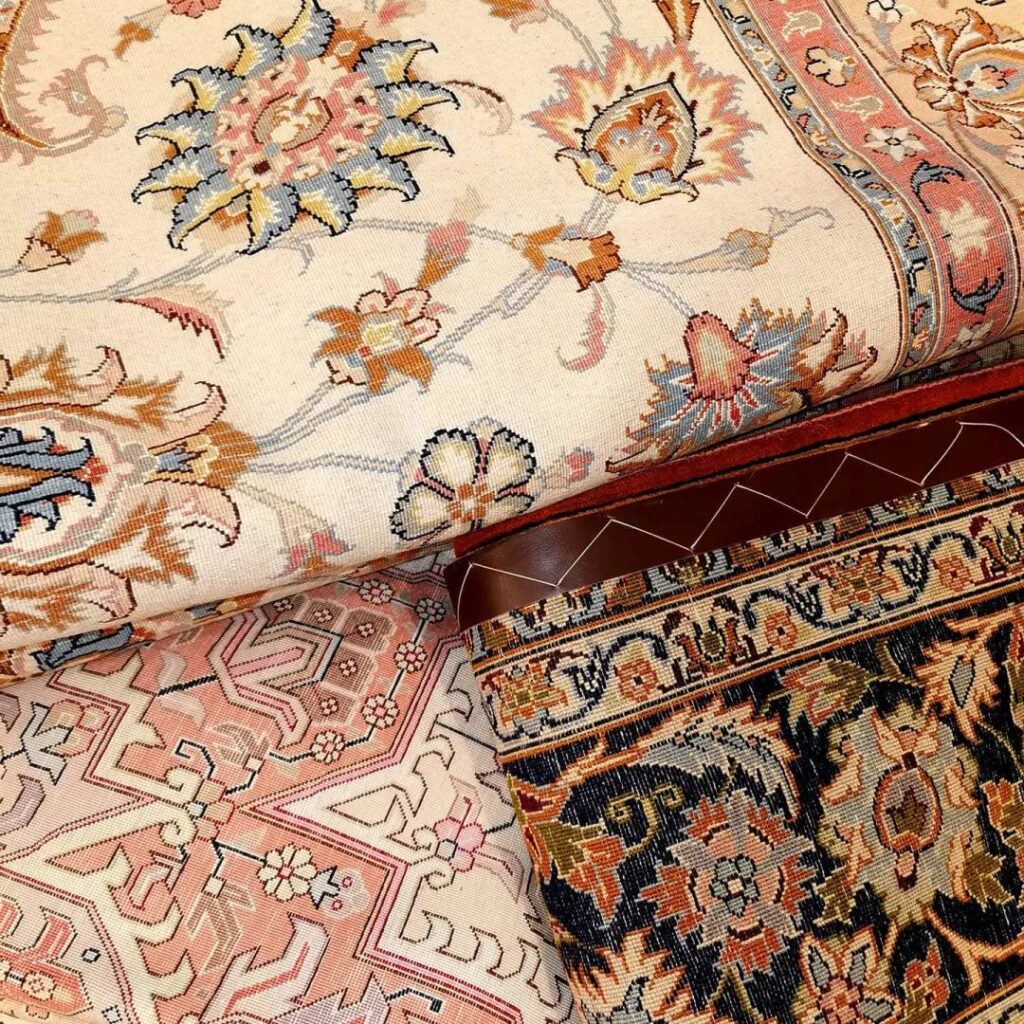Once you have experienced the comfort and quality of handmade carpets, you would never opt for machine-made ones. The most significant reason is that handmade, knot-tied carpets are free from any glue and formaldehyde, and they emit no unpleasant odors, making them a healthy and eco-friendly choice that can be folded and rolled. Why are handmade carpets free from formaldehyde? To answer this question, we must first understand why some machine-made carpets contain formaldehyde.
Take gun-tufted carpets as an example; they are made by using a tufting gun to attach yarn to the carpet backing, which is then fixed with glue. The glue contains formaldehyde, and when the carpet is heated by underfloor heating in winter, it can volatilize into the air, which is not beneficial to human health over time. Additionally, some low-cost carpets use backing materials made with strong adhesives such as styrene-butadiene rubber and natural latex, which can also release a large amount of organic pollutants when used. In contrast, handmade, knot-tied carpets are crafted by weavers sitting at looms, tying knots and securing them on the warp threads by hand. This very traditional and lengthy production process, while limiting the mass production speed, greatly enhances the quality and level of the carpets. Handwoven carpets are strong and durable, with a dense and orderly arrangement of pile, and they do not require glue to hold the carpet together, making them safe to use even with underfloor heating. Handmade carpets, if not damaged by human actions, can last for centuries, whereas machine-made carpets, which rely on glue for fixation, tend to have a lifespan of only 3 to 5 years due to the glue’s long-term oxidation and eventual breakdown. Throughout the lengthy process of creating a handmade carpet, from the initial warping, loom preparation, and manual spinning, to the final trimming, cleaning, drying, tasseling, and ironing, there are twelve steps that generally do not require machine intervention. Therefore, a high-quality handmade carpet, if properly maintained, can be passed down from generation to generation. Due to the long history of handmade knot-tied carpets, different regions around the world have developed unique knotting techniques. Generally, the knotting methods of handmade carpets can be categorized into four types. The Turkish knot, also known as the symmetrical knot or Ghiordes knot, originated in the region of Turkey. It involves tying knots on adjacent warp threads simultaneously (as shown in the red part of the illustration), with weft threads used to secure the knots in the middle of each row, a process we call ‘wefting’ (as shown in the blue part of the illustration), making the knots on the carpet surface more robust. Carpets woven with Turkish knots are often very solid and heavy. The Turkish knot originated in Turkey and later spread to the Caucasus and western Iran due to the migration of Turkish ethnic tribes.The Persian knot, also known as the asymmetric knot or Senneh knot, is tied on two warp threads, with only one being secured while the other remains loose (as shown in the red part of the illustration). Each row of knots is similarly fixed with weft threads (as shown in the blue part of the illustration). This knot is highly useful for weaving high-density, intricately designed carpets. It is primarily used in Iran, India, Turkey, Egypt, and China.
The Ghiordes knot, on the other hand, is not tied on two warp threads but on four (as shown in the red part of the illustration), with each row of knots fixed with one or two weft threads (as shown in the blue part of the illustration). It could be a Turkish knot or a Persian knot, but due to its construction on four warp threads, it weaves quickly, resulting in a coarser surface and looser knots that are less durable. This knotting method is commonly found in the Khorasan carpets of Iran. The Tibetan knotting method, originating from the Tibetan region and also known as the ‘rod knotting’, requires a horizontal rod to assist during the carpet weaving process. As illustrated, the red weft thread passes through the rod and wraps around one or two weft threads to tie knots. Once a row of knots is completed, the knots on the rod are cut with a knife, creating the pile of the carpet. This knotting method is prevalent in Tibet, Qinghai, India, and Nepal. Handmade carpets, despite their varying knotting methods, do not require the addition of glue, flame retardants, or other chemical materials, making them healthy and environmentally friendly, and highly favored by discerning individuals. If you are looking for a healthy and safe carpet, handmade carpets can meet your needs. Tian Jiang currently offers two types of handmade knotting carpets: silk and wool, with a rich variety of patterns and sizes. If you need more information, please contact us.
